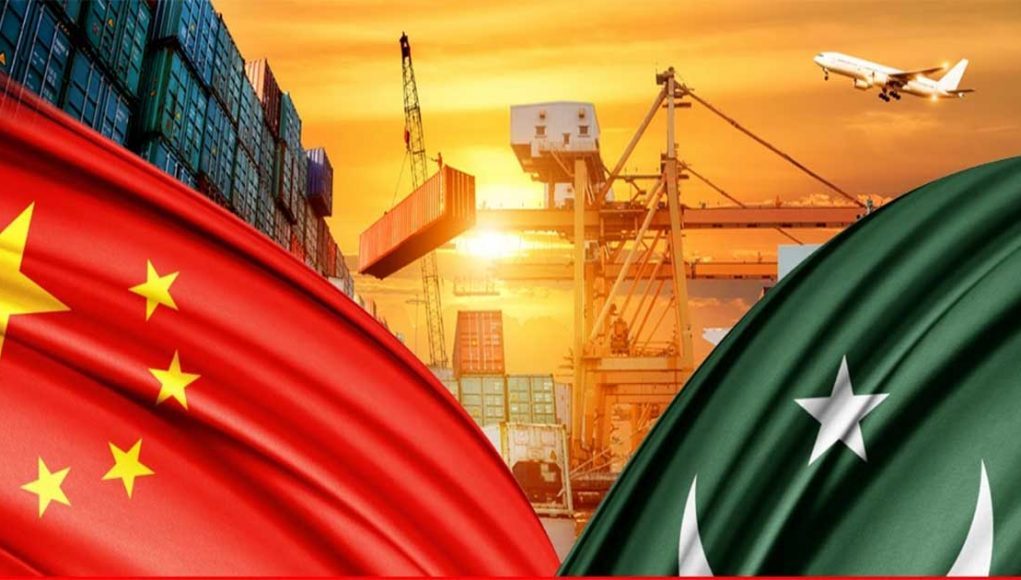 The Chinese President Xi Jinping unveiled the Belt and Road Initiative (BRI), previously One Belt One Road (OBOR), in 2013. It is an investment program which envisages to enhance the economic integration of nearly 70 transcontinental countries, representing more than two third of world’s population, along the route of the historic Silk Road.
The Chinese President Xi Jinping unveiled the Belt and Road Initiative (BRI), previously One Belt One Road (OBOR), in 2013. It is an investment program which envisages to enhance the economic integration of nearly 70 transcontinental countries, representing more than two third of world’s population, along the route of the historic Silk Road.
BRI aims at the connectivity of diverse countries in the Asian, European and African continents along with their adjacent seas. Although it is a global project, it mainly focuses on the countries in Central Asia, Eastern Africa, Eastern Europe, and Middle East. It will develop and strengthen the partnership among these countries through composite connectivity networks and independent and sustainable development.
The cooperation priorities of BRI includes policy coordination, facilities connectivity, unimpeded trade, financial integration and people-to-people bonds. It intends to jointly formulate development plans for advancing regional cooperation through intergovernmental cooperation, multi-tier macro policy exchange, communication networks and coordinated monetary policy.
China Pakistan Economic corridor (CPEC) is a crown jewel of the BRI as it will offer the shortest access to the markets of Central Asia, Africa, Middle East and Europe through the deep sea Gwadar port. A research study, by Khalid Mehmood Alam published in Journal of Advanced Transportation, compares existing trade route of China, from kashgar to Shangai port then to Middle East and Europe, with proposed CPEC route through Gwadar port. The study evaluates that a 40-foot container from Kashgar through CPEC route, i.e. Gwadar port, to destination ports in the Middle East and Africa will cost lesser by about 1,450 US dollar and for destination ports in Europe by 1,350 US dollar. Further, travel time will be reduced by 24 and 21 days respectively. The distance is estimated to be decreased by 11,000 to 13,000 km.
CPEC will revive the ancient Silk Route that was oldest trade route pre-existing the Han Dynasty of China. The Silk Route connected China with Britain through Indian subcontinent, Asia Minor, Africa, Greece and Rome. CPEC is though a bilateral project its benefits will be spilled over to different regions. It will provide an easy access to cheap Chinese market through Gwadar port.
Pakistan is bestowed with numerous natural gifts and the most important one is its highly strategic geographical location that will make it hub of international trade and connectivity. Pakistan is a gateway to Central Asian Republics and Afghanistan. It has been learnt that Central Asian countries are approaching Pakistan for trade facilitation in Gwadar and Bin Qasim seaports. Afghanistan is already benefiting from the strategically located Gwadar port as transit consignments of bulk cargo through Gwadar to Afghanistan are operational.
In a recent webinar arranged by Centre for Global & Strategic Studies, Ambassador of Iran to Pakistan, H.E Syed Mohamad Ali Husseini, highlighted “Iran-Pakistan-China cooperation provides an opportunity for positive trilateral cooperation under BRI initiative. Financial & other forms of cooperation have a potential of increased development”. CPEC will offer a new route for Iranian oil & gas resources to China.
Despite the disruptions caused by Covid-19, CPEC is not only being implemented as outlined but also appears to have picked up pace after the launch of CPEC Authority in October 2019. Since the appointment of Lt. Gen. retired Asim Saleem Bajwa as Chairman CPEC Authority, CPEC related activities witnessed an impetus and it is evidenced from the approval of PC-I for Main Line-I from ECNEC, operationalization of KKH Phase-II, approval of PC-I for M-6 (Sukkur-Hyderabad section), signing of concession agreements for 1,124 MW Kohala HPP and 701 MW Azad Pattan HPP, commencement of power generation by China Hub 1,320 MW and 660 MW Engro Thar power plants, approval of Master Plan for Gwadar Smart City, groundbreaking of Allama Iqbal Industrial City, signing of Development Agreement of Rashakai SEZ and significant developments on numerous Socio-Economic, Agricultural and Gwadar related projects.
After overcoming the important energy and other infrastructure related deficits, the second phase of CPEC focuses on the industrial cooperation, agricultural development and other socio-economic related projects aimed at improving the livelihood of local masses. The industrial cooperation under CPEC is envisaged to relocate foreign industry with advanced technology to enhance domestic manufacturing capacity. Natural resources, skilled and cheap workforce, optimal infrastructure, easy access to international markets and investor friendly investment policy will help Pakistan attract foreign investment in the Special Economic Zones (SEZs) under CPEC.
These SEZs offer various attractive fiscal and non-fiscal incentives for developers as well as enterprises coming from local and foreign alike. Numerous reforms have been implemented to improve the investment climate in Pakistan. World Bank’s Ease of Doing Business Report for 2020 has recognized Pakistan as top reformer in the South Asia and Sixth in the world.
Chinese and other foreign companies can relocate their industries to take benefit not only from the attractive incentives and business friendly investment policy but also from the huge market access through the Gwadar’s warm water deep seaport. CPEC holds shared prosperity not only for the Pakistan and China but for the entire region. CPEC is a flagship project of BRI’s six corridors and it will usher in a new era of regional connectivity and development.
CPEC is pivotal in the development of Belt and Road Initiative by the virtue of apart from the reduced travel cost and time, it will provide an important loop in the shape of various sea and land routes adjacent to Gwadar port.